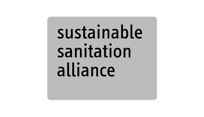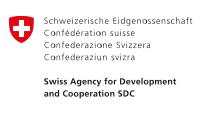Controlled waste disposal uses mitigation measures to minimise the environmental and health impact of waste. At a designated disposal site, waste is systematically managed in ’cells’ where it is spread, compacted and covered through manual or mechanised force. Whenever possible or necessary, controlled disposal sites are lined and waste leachate is collected and managed.

Unlike open dumping U.10, a controlled disposal site is a designated, government-approved area for safe waste deposit. Measures are taken to minimise negative impacts on public health and the environment, such as restricted access (fence, gate and guards) and diverting rainwater surface runoff into a peripheral drainage system. An impermeable bottom liner further prevents the infiltration of waste leachate into the groundwater. The collected leachate is transferred through internal drains into treatment, evaporation or recirculation ponds. Vent pipes ensure that flammable gases created in the deposited waste are safely released. In developed settings, these gases are flared to prevent methane emissions. In controlled disposal sites, waste is unloaded at the tipping face. There, it is spread, compacted and covered to create a cell. Waste cells are the building blocks of the disposal site.
Design Considerations
Site selection must minimise environmental and public health risks. It should assess the presence and flow direction of water bodies (both subsurface and surface), wind direction, distance to settlements and how neighbouring lands are being used. If possible, interventions should enhance and improve existing sites and avoid establishing new disposal sites. Shared use for displaced and host communities can facilitate approval. Disposal sites are either artificially prepared and excavated, built into the natural topography or a combination of both. The groundwater table’s ten-year high should be at least 1.5 meters below the excavation base. The waste is deposited at the tipping face, spread, compacted in layers and covered with material to form a cell. The disposal site is designed and constructed cell by cell, layer on layer. The size of cells can vary but should be 1 to 1.5 m high to allow for proper compaction. The need for a liner depends on the risk of soil and groundwater pollution. Leachate ponds and potential recirculation systems must be sized according to local climate conditions to contain leachate within the site. Fences limit access to the site and prevent the loss of waste by wind. Vegetation can reduce surface wind speeds and act as a visual barrier. Covering with soil reduces odour and loss by wind and minimises the risk of fires. For manually operated landfills a height of three to six meters is recommended. In all cases, safe slopes for waste and cover materials are essential. As an example calculation of the surface area needed, a site four meters high serving 50,000 people over 10 years, generating 0.2 kg/person/day of residual waste requires a surface area of ca. 26,000 m² (2.6 hectares).
Materials
Heavy excavation and compaction vehicles may be required to prepare the site and, if a bottom liner is necessary, additional vehicles and equipment. Impermeable liners include geomembranes (typically used in leachate ponds) or geosynthetics which might have to be imported or brought in from further away. Compacted clay layers can act as a local and inexpensive alternative. Clay-rich soil is preferred as a cover material, but any locally available soil types and excavation materials are adequate. Manual operations require wheelbarrows, shovels, rakes and compaction equipment (hand tamper or manual roller) For mechanised operations, a landfill compactor, road roller or a track-type tractor is required to move, compact and cover the waste. Drains filled with gravel can ensure leachate drainage to the storage pond. Perforated vertical pipes can be used as vent pipes to safely release gases.
Applicability
Safe and controlled disposal sites must be prioritised over uncontrolled and unsafe waste dumping. In humanitarian settings, it should be considered at an early stage. Even if initially limited to improvised and non-ideal solutions, they can be improved and converted into controlled disposal sites over time. Waste should be separated at source P.1; though mixed waste can be disposed of it greatly reduces the lifetime of the disposal site; organic waste attracts pests and produces flammable methane gas; fast uncontrolled outgassing can lead to the collapse of piled waste. Most special wastes must be disposed of separately (W.1 - W.7). Controlled disposal sites can be used both in urban and rural contexts.
Operation and Maintenance
All incoming waste must be verified (to prevent deposits of prohibited materials). Truckload weights or numbers must be recorded (ideally with their origin). As the waste will settle over time, regular monitoring and maintenance are essential to address the changes and ensure the integrity and stability of the site. Staff requirements depend on the site design; if motorised transport of waste and cover material to the tipping face is possible and motorised compaction is used, staffing needs can be minimised. Whenever possible, environmental parameters such as air or groundwater quality should be monitored.
Health and Safety
All operators involved in waste deposits must be adequately trained in waste handling and occupational safety and require personal protective equipment X.4. To stabilise the disposal site and prevent the collapse of waste and landslides, slope gradients must be determined by an expert. Gas emissions can be safely evacuated with vent pipes and daily covering of waste reduces fire risks; smoking or fires must be prohibited on the disposal site. Access to unauthorised individuals, waste pickers and animals must be prevented with fencing and a gate.
Costs
Capital costs include the cost of the land, potential road extensions to the site, the preparation of the site and the implementation of protective measures. Operational costs include the recording and monitoring of received waste as well as its handling. Additional costs should be anticipated for the decommissioning and closure of the site. The site’s lifetime influences costs as economies of scale apply to infrastructure in long-term use. In low and middle-income countries, costs can be estimated at around 10 to 30 USD per ton of waste, assuming the site operates for over 20 years. The siting of the facility also influences the cost of transporting waste to the site.
Social Considerations
If controlled disposal sites are poorly managed, they can become uncontrolled sites (U.10 and U.11). Community engagement X.2 is essential as disposal sites are not typically well accepted by neighbouring populations; identifying and obtaining approval for new sites might be challenging. Strategies for mitigating potential conflicts arising from the site's location or operation should be in place, as well as monitoring and addressing concerns such as odour, pests, property values and environmental impacts X.3. Women and marginalised groups must have a voice in decision making and their specific needs addressed X.9. Alternative income opportunities for informal waste pickers are essential as they must not allowed on disposal sites.
Key Decision Criteria
Input Products
Mixed Waste
Residual Waste
Response Phase
Application Level
Management Level
Space Required
high
Technical Complexity
medium
Objectives & Key Features
Disposal of waste with mitigation and containment measures to reduce spreading and impacts
Strength & Weakness
- Can reduce the public health and environmental risks of solid waste disposal
- Has large space requirements and prevents or severely constrains the repurposing of land after closure
- Land acquisition can be challenging due to low political interest and acceptance from local communities
- Requires constant supervision and management to avoid becoming a dumpsite






